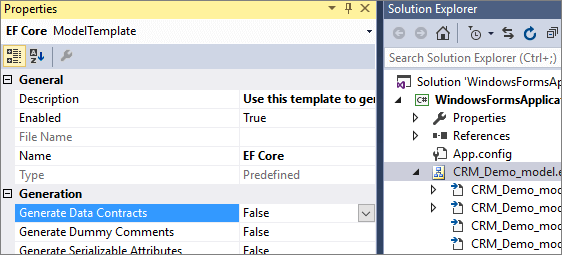Entity Developer Features
Entity Developer offers a number of visual designer tools and code generation
features to help you design ORM models faster and generate professional and
extensible code for them. The tool supports Entity Framework Core version 9.0 and PostgreSQL version 17.
There are three options available: standalone, console, and Visual Studio integration.











